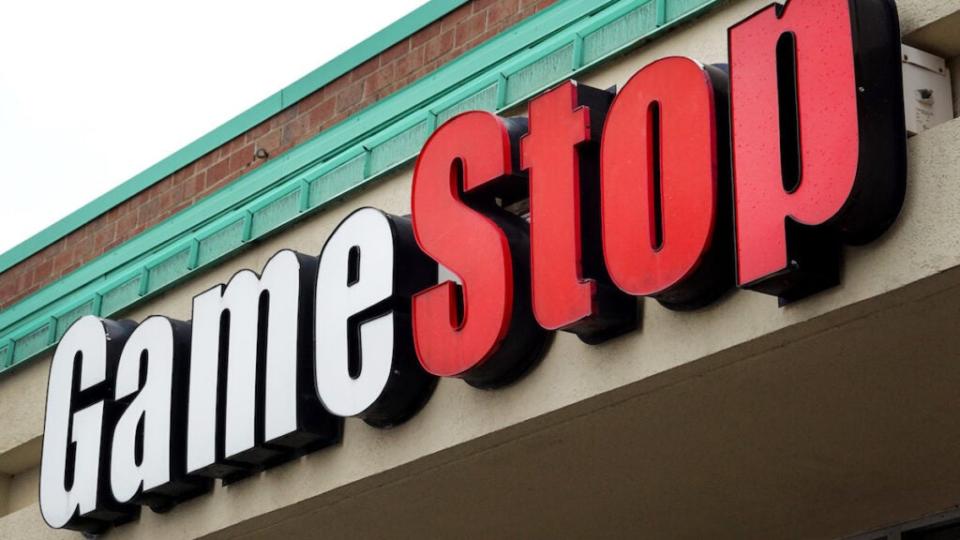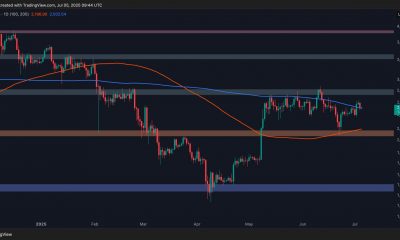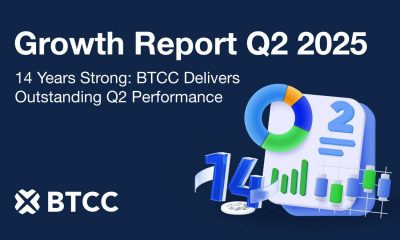Economy
Fed rate expectations, GameStop terminates CEO – what’s moving markets

Bets that the Federal Reserve will raise interest rates next week rise after a surprise hike in borrowing costs by the Bank of Canada. Meanwhile, GameStop shakes up its leadership team, terminating its chief executive officer and appointing meme stock community favorite Ryan Cohen as executive chairman.
1. U.S. Treasury yields surge after Bank of Canada rate rise
U.S. yields inched higher on Thursday, tacking on to a big overnight jump, as investors gauged the outlook for Federal Reserve policy following an unexpected interest rate hike by the Bank of Canada.
By 04:57 ET (08:57 GMT), the yield on 10-year Treasury notes edged up to 3.797%, while the yield on the 30-year Treasury bond rose to 3.952%. The 2-year note, which is typically sensitive to Fed rate expectations, also moved up to 4.551%. Prices fall as yields rise.
On Wednesday, the Bank of Canada increased its policy rate, ending a recent pause on policy tightening. The central bank argued that the move was necessary to combat stubbornly elevated inflation.
Coupled with a rate rise by the Reserve Bank of Australia earlier this week, the BoC’s decision boosted bets that the Fed will follow suit at its highly anticipated meeting next week. The chance that the U.S. central bank will hike rates by 25 basis points — and not temporarily halt a long-standing tightening campaign — has now gone up to 32.2% from 21.8% on June 6, according to the CME Group’s FedWatch Tool.
2. Futures flat with Fed meeting approaching
U.S. stock futures hovered largely around the flatline as investors looked ahead to the all-important Federal Reserve policy meeting next week.
By 04:59 ET, the Dow futures contract and S&P 500 futures were both broadly unchanged, while Nasdaq 100 futures dipped by 9 points or 0.06%.
In the prior session, the broad-based Dow Jones Industrial Average gained 0.27%. Meanwhile, the benchmark S&P 500 and Nasdaq Composite both dipped, pumping the brakes on a recent rally.
With a fraught debt ceiling drama in Washington now resolved and earnings season coming to a close, attention is turning to the Fed’s two-day gathering starting on June 13. On the data front, the major release will be the May U.S. consumer price index next Tuesday, which some analysts say could prove to be pivotal in determining whether policymakers choose to hike interest rates or push pause on further tightening.
3. GameStop shares slide after CEO Matt Furlong terminated
Shares in GameStop (NYSE:GME) shed more than 17% of their value in premarket trading on Thursday after the video game retailer announced that it had “terminated” chief executive officer Matt Furlong and appointed Ryan Cohen as executive chairman.
Furlong also stepped down from the board on June 5, GameStop said. The business noted in a regulatory filing that his “resignation did not result from any disagreement with the Company on any matter relating to the Company’s operations, policies or practices.”
Cohen, whose investment in GameStop helped turn him into a darling for investors in meme stocks, previously joined the board in 2021. He later became chairman in June of that year.
The shake-up comes as GameStop attempts to boost sales, which have been under increasing pressure as downloadable console games dissuade shoppers from buying the hard copies sold at its shops. First quarter results released on Wednesday missed Wall Street estimates.
4. State-backed Chinese banks slash deposit rates
China’s four big government-sponsored lenders said they have lowered their rates on yuan deposits, as Beijing seeks to support a post-pandemic recovery that is showing signs of flagging.
Industrial and Commercial Bank of China, Agricultural Bank of China Ltd., Bank of China Ltd., and China Construction Bank Corp., all slashed the rates on deposits by 5 basis points, according to the companies’ websites. Three-year and five-year time deposits were also brought down by 15 basis points.
It is the second time in less than a year that these banks have rolled out deposit cuts.
The moves come as China is attempting to boost consumption and investment in the wake of data that has shown disappointing exports and a struggling property market. The world’s second-largest economy had enjoyed a resurgence in the first quarter following the lifting of harsh COVID-19 restrictions, but that initial sugar rush could now be waning.
5. Oil choppy after mixed U.S. fuel inventories
Oil prices were volatile on Thursday as traders attempted to digest mixed fuel inventories and gauge the outlook for crude demand.
Official data on Wednesday showed that U.S. crude inventories unexpectedly fell last week. But gasoline stockpiles grew for the first time in five weeks — a development that came as a surprise given it occurred at the start of the summer driving season, which usually drives a sharp uptick in U.S. fuel demand.
The numbers were the latest twist in an up-and-down week for the crude market. Early gains spurred on by Saudi Arabia’s unexpected production cut have quickly dissipated after the release of weak Chinese trade data led to worries about the state of the recovery in the world’s biggest oil importer.
By 05:01 ET, U.S. crude futures traded 0.55% lower at $72.13 a barrel and the Brentcontract slipped by 0.58% to $76.50 per barrel.
Economy
Russian central bank says it needs months to make sure CPI falling before rate cuts -RBC


© Reuters. Russian Central Bank Governor Elvira Nabiullina attends a news conference in Moscow, Russia June 14, 2019. REUTERS/Shamil Zhumatov/File Photo
MOSCOW (Reuters) – Russia’s central bank will need two to three months to make sure that inflation is steadily declining before taking any decision on interest rate cuts, the bank’s governor Elvira Nabiullina told RBC media on Sunday.
The central bank raised its key interest rate by 100 basis points to 16% earlier in December, hiking for the fifth consecutive meeting in response to stubborn inflation, and suggested that its tightening cycle was nearly over.
Nabiullina said it was not yet clear when exactly the regulator would start cutting rates, however.
“We really need to make sure that inflation is steadily decreasing, that these are not one-off factors that can affect the rate of price growth in a particular month,” she said.
Nabiullina said the bank was taking into account a wide range of indicators but primarily those that “characterize the stability of inflation”.
“This will take two or three months or more – it depends on how much the wide range of indicators that characterize sustainable inflation declines,” she said.
The bank will next convene to set its benchmark rate on Feb. 16.
The governor also said the bank should have started monetary policy tightening earlier than in July, when it embarked on the rate-hiking cycle.
Economy
China identifies second set of projects in $140 billion spending plan


© Reuters. FILE PHOTO: Workers walk past an under-construction area with completed office towers in the background, in Shenzhen’s Qianhai new district, Guangdong province, China August 25, 2023. REUTERS/David Kirton/File Photo
SHANGHAI (Reuters) – China’s top planning body said on Saturday it had identified a second batch of public investment projects, including flood control and disaster relief programmes, under a bond issuance and investment plan announced in October to boost the economy.
With the latest tranche, China has now earmarked more than 800 billion yuan of its 1 trillion yuan ($140 billion) in additional government bond issuance in the fourth quarter, as it focuses on fiscal steps to shore up the flagging economy.
The National Development and Reform Commission (NDRC) said in a statement on Saturday it had identified 9,600 projects with planned investment of more than 560 billion yuan.
China’s economy, the world’s second largest, is struggling to regain its footing post-COVID-19 as policymakers grapple with tepid consumer demand, weak exports, falling foreign investment and a deepening real estate crisis.
The 1 trillion yuan in additional bond issuance will widen China’s 2023 budget deficit ratio to around 3.8 percent from 3 percent, the state-run Xinhua news agency has said.
“Construction of the projects will improve China’s flood control system, emergency response mechanism and disaster relief capabilities, and better protect people’s lives and property, so it is very significant,” the NDRC said.
The agency said it will coordinate with other government bodies to make sure that funds are allocated speedily for investment and that high standards of quality are maintained in project construction.
($1 = 7.1315 renminbi)
Economy
Russian central bank says it needs months to make sure CPI falling before rate cuts -RBC


© Reuters. Russian Central Bank Governor Elvira Nabiullina attends a news conference in Moscow, Russia June 14, 2019. REUTERS/Shamil Zhumatov/File Photo
MOSCOW (Reuters) – Russia’s central bank will need two to three months to make sure that inflation is steadily declining before taking any decision on interest rate cuts, the bank’s governor Elvira Nabiullina told RBC media on Sunday.
The central bank raised its key interest rate by 100 basis points to 16% earlier in December, hiking for the fifth consecutive meeting in response to stubborn inflation, and suggested that its tightening cycle was nearly over.
Nabiullina said it was not yet clear when exactly the regulator would start cutting rates, however.
“We really need to make sure that inflation is steadily decreasing, that these are not one-off factors that can affect the rate of price growth in a particular month,” she said.
Nabiullina said the bank was taking into account a wide range of indicators but primarily those that “characterize the stability of inflation”.
“This will take two or three months or more – it depends on how much the wide range of indicators that characterize sustainable inflation declines,” she said.
The bank will next convene to set its benchmark rate on Feb. 16.
The governor also said the bank should have started monetary policy tightening earlier than in July, when it embarked on the rate-hiking cycle.

 Forex3 years ago
Forex3 years agoForex Today: the dollar is gaining strength amid gloomy sentiment at the start of the Fed’s week

 Forex3 years ago
Forex3 years agoUnbiased review of Pocket Option broker

 Forex3 years ago
Forex3 years agoDollar to pound sterling exchange rate today: Pound plummeted to its lowest since 1985

 Forex3 years ago
Forex3 years agoHow is the Australian dollar doing today?

 Cryptocurrency3 years ago
Cryptocurrency3 years agoWhat happened in the crypto market – current events today

 World3 years ago
World3 years agoWhy are modern video games an art form?

 Commodities3 years ago
Commodities3 years agoCopper continues to fall in price on expectations of lower demand in China

 Economy3 years ago
Economy3 years agoCrude oil tankers double in price due to EU anti-Russian sanctions



























